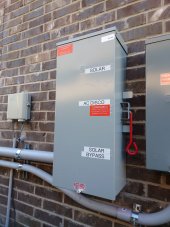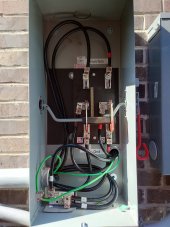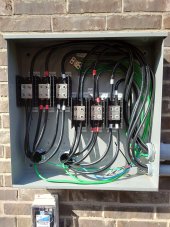I'm investigating a system that can switch between being off grid and being on grid via a transfer switch
I was looking at the sol-ark manual, and where they show a bypass, even in off-grid mode it looks like its still asking for power from the grid.
am I reading this correctly, and if so, why is that? thanks
click the image for an non highligted version as well.
you can also find it on page 9 of 55 of the manual
here
I was looking at the sol-ark manual, and where they show a bypass, even in off-grid mode it looks like its still asking for power from the grid.
am I reading this correctly, and if so, why is that? thanks
click the image for an non highligted version as well.
you can also find it on page 9 of 55 of the manual
here
Last edited:





